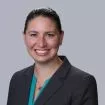- within Intellectual Property topic(s)
- with readers working within the Law Firm industries
- within Intellectual Property topic(s)
- in United Kingdom
The United States Patent and Trademark Office (USPTO) issued a memorandum ( "Memo") to examiners in Technology Centers 2100, 2600, and 3600 on August 4, 2025. The Memo further clarifies prior guidance on how to evaluate subject matter eligibility for software-based inventions under 35 U.S.C. § 101. While the Memo is intended for examiners, it provides valuable insights for patent practitioners.
The Memo highlights aspects of the analysis examiners should undertake when applying Step 2A of the Alice/Mayo framework.
Step 2A Prong One
Clarified "Mental Process" Grouping of Abstract Ideas: The Memo clarifies that a claim does not recite a mental process if its limitations cannot practically be performed in the human mind. This is particularly impactful for AI-related inventions, where examiners often resort to "mental process" in rejecting such inventions as abstract ideas. It is now clear going forward that claims encompassing AI in a way that cannot be practically performed by a human mind do not fall within the mental process grouping.
Distinguishing "Recites" from "Involves" a Judicial Exception: The Memo emphasizes the distinction between claims that "recite" a judicial exception (requiring further analysis) and those that "merely involve" one (which are eligible and do not require further analysis). The Memo explains that a claim that "trains a neural network" might merely involve mathematical concepts without explicitly describing them, making it eligible. In contrast, a claim explicitly referencing specific mathematical algorithms like "backpropagation" and "gradient descent" algorithms fall within an exception. Applicants should take care to frame their claims to avoid explicitly encompassing abstract ideas where possible, thereby simplifying the eligibility analysis or avoiding it altogether.
Step 2A Prong Two
Emphasis on "Claim as a Whole" Analysis: The Memo reminds examiners to consider the claim as a whole when evaluating whether a judicial exception is integrated into a practical application. This means that additional elements should not be evaluated in isolation from the recited judicial exception.
"Improvements" Consideration: The Memo highlights that claims are eligible if they reflect an "improvement to the functioning of a computer or to another technology or technical field". This provides a significant pathway for overcoming 101 rejections, especially for computer-related inventions. Applicants can emphasize how their invention provides a "technological solution to a technological problem" or covers a "particular solution to a problem or a particular way to achieve a desired outcome". Furthermore, the specification does not need to explicitly state the improvement, if it would be apparent to one of ordinary skill in the art. But having the improvement baked into the specification at the drafting stage is likely beneficial – particularly if the patent is ever litigated.
Nuance in "Apply It" Consideration: The Memo cautions examiners against oversimplifying claim limitations and expanding the "apply it" consideration. It clarifies that merely applying a judicial exception on a generic computer might not render a claim eligible, but a limitation that "meaningfully limits the judicial exception" can. The Memo also notes the overlap between the "apply it" and "improvements" considerations, urging examiners to consider whether the claim provides details on how a solution is accomplished, or whether it improves computer capabilities or existing technology.
The also Memo reminds examiners that they should only make a 101 rejection if it is "more likely than not (i.e., more than 50%) that the claim is ineligible". This "preponderance of the evidence" standard should benefit applicants as it provides a demarcation point, even though a grey one, in determining the reasonableness of a given rejection under the Alice/Mayo framework.
By reiterating and clarifying the Step 2A analysis of the Alice/Mayo framework, the USPTO's recent guidance promotes consistency in subject matter eligibility analysis for examiners.
The content of this article is intended to provide a general guide to the subject matter. Specialist advice should be sought about your specific circumstances.
[View Source]
